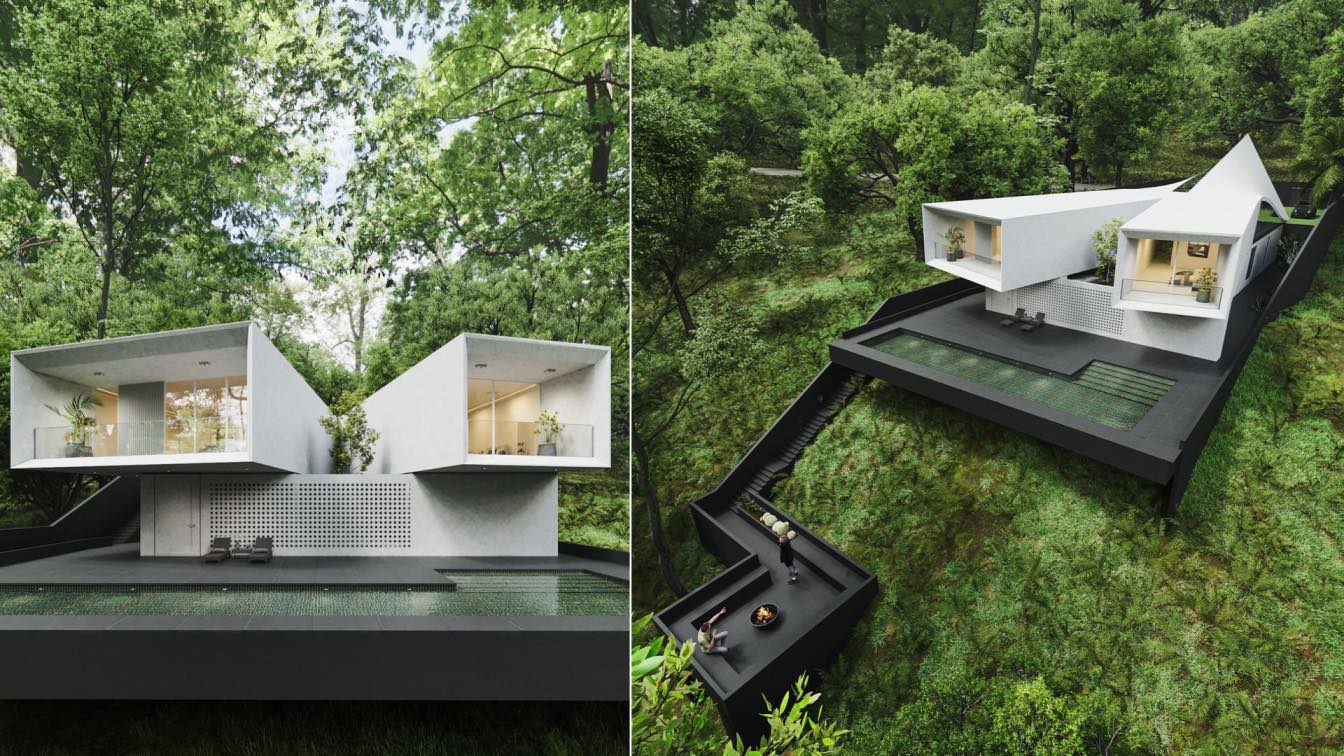Mohammad Hossein Rabbani Zade: The Creamy Retreat is a pioneering architectural endeavor that redefines the boundaries of luxury and whimsy through its innovative use of ice-cream as a primary material. This modern A-frame cabin harmoniously blends contemporary design principles with playful aesthetics, creating a unique sanctuary for relaxation and indulgence. The project challenges conventional notions of architecture, materiality, and sustainability, presenting a bold vision for the future of experiential living.
Design Concept:
The design of the Creamy Retreat is rooted in the iconic A-frame structure, known for its simplicity and efficiency. The steeply pitched roof not only enhances the cabin's visual appeal but also facilitates natural drainage, ensuring longevity in a climate-sensitive context. The exterior facade, crafted from a composite of ice-cream layers, showcases a spectrum of colors and textures, mimicking the delightful swirls and patterns found in artisanal frozen treats. This playful exterior invites curiosity and wonder, setting the stage for an immersive experience.
Materials and Construction:
In a groundbreaking approach to materiality, all components of the Creamy Retreat—including furniture, flooring, and ceilings—are meticulously crafted from specially formulated ice-cream composites. These materials are engineered to withstand environmental stresses while maintaining their aesthetic integrity. The use of food-grade polymers and bio-based additives ensures that the structure is both durable and sustainable, aligning with contemporary architectural practices that emphasize eco-friendliness.
The interior features a seamless transition from walls to floors, enveloping occupants in a cohesive sensory experience. The tactile nature of the ice-cream surfaces invites interaction, encouraging guests to engage with their surroundings in unexpected ways. The furniture is designed to be both functional and artistic, with sculptural forms that echo the fluidity of ice-cream itself. Custom seating arrangements and tables are ergonomically designed to provide comfort while celebrating the artistry of confectionery design.

Interior Experience:
Upon entering the Creamy Retreat, guests are greeted by an enchanting ambiance characterized by soft lighting that mimics the warm glow of sunset, casting gentle shadows across the textured ice-cream surfaces. The open-plan layout promotes social interaction while maintaining intimate spaces for relaxation. Large panoramic windows frame breathtaking views of the surrounding landscape, blurring the line between indoor and outdoor environments.
The cabin features distinct zones for various activities, including a cozy reading nook nestled within an alcove of colorful ice-cream walls, and a communal dining area where guests can savor culinary delights inspired by their surroundings. Each space is thoughtfully curated to enhance sensory experiences, with scents, colors, and textures working in harmony to evoke feelings of nostalgia and joy.
Sustainability Considerations:
The Creamy Retreat exemplifies a commitment to sustainability through its innovative use of materials and energy-efficient design. The cabin incorporates passive solar strategies, maximizing natural light while minimizing energy consumption. Additionally, rainwater harvesting systems are integrated into the design to support on-site maintenance of the ice-cream structures.
By employing biodegradable materials and promoting a circular economy approach, the project not only reduces environmental impact but also serves as a case study for future architectural endeavors seeking to merge creativity with ecological responsibility.
Conclusion:
The Creamy Retreat stands as a testament to the limitless possibilities of architectural innovation. By reimagining traditional forms and materials through a lens of playfulness and luxury, this project invites architects and designers alike to explore new frontiers in
experiential living. It challenges us to think beyond the conventional, inspiring future generations to embrace creativity in architecture while fostering a deeper connection to our sensory experiences and the environments we inhabit.








.jpg)


